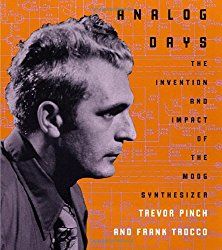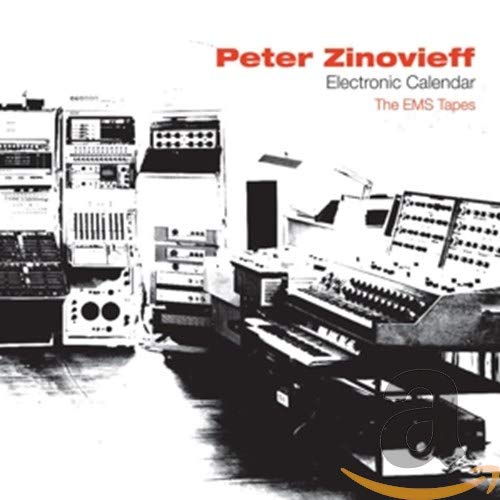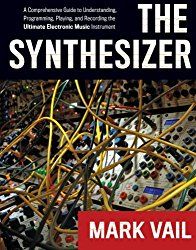video uploads by Whimsical Raps
Playlist:
1. Whimsical Patching // 1. Audio-Rate Modulation
from Dani:2. Whimsical Patching // 2. Self-Patch Feedback
"One of my favorite aspects of modular synthesis is that signals we can hear are made of the same basic building block as signals which provide control and modulation -- they're all just voltage moving at different rates!
When we use an audio signal in the place of control voltage, we're touching into a technique broadly known as audio-rate modulation. Using audio-rate modulation in the Whimsical Raps ecosystem is incredibly rewarding, as it can unlock unexpected behaviors in familiar and new modules alike.
Here, Mangrove (our formant oscillator) modulates Silhouette's (our new 'signal combiner') SPOT, which is mixing six audio channels from Just Friends (our six-voice digital oscillator). I noticed that sending Mangrove into SPOT bleeds Mangrove's audio signal into the mix, so I tuned Mangrove to harmonize with Just Friends. This endowed FORMANT changes with new power, adding harmonic depth to the chaotic modulation -- notice the sizzle around 0:30 as FORMANT is cranked up.
Once INTONE adds distance between the ratios of Just Friends' oscillations, I reduce FORMANT to a low-frequency grumble -- I particularly enjoyed Silhouette's delayed vocalizations of these changes across the stereo field. Manually scanning SPOT offsets the input channels we're highlighting, which reveals the new INTONE-spread pitches. Increasing FORMANT introduces audible discontinuities as Mangrove regains its pitch, which are unique in the left and right channels. A final INTONE adjustment is added for performative spice, which is caught by the bucket-brigade device for a muted splash of stereo color."
from Dani:3. Whimsical Patching // 3. V/8 Beyond Pitch + Cross-Modulation
"One of the most exciting facets of Silhouette's design is how the sound palette changes and, really _unlocks_, via self-patching. For example, patching SHADOW back to the various INPUTS allows for SPOT-controlled regeneration.
In this video, a chord from Just Friends and a 'kick' from Mangrove is spread across the INPUTS. SHADOW is patched into the sixth input, which makes SPOT's modulator act as a temperamental levee -- just as the level of the signal's feedback seems to overtake the output from LIGHT and RIGHT, a small nudge engages the strange attractor and SPOT surveys an ever-changing landscape of pulses and tones.
I'm particularly enthralled by the way that SPOT and its modulator become a macro control -- panning and voice distribution are linked to the depth of the self-patch's influence. This becomes apparent when SHADOW is patched into the third input, which creates a different stereo terrain.
Self-patching is very rewarding across the entire Mannequins lineup -- eg. a channel from Just Friends patched back to its own INTONE will create a wonderfully complex undercurrent to its otherwise predictable movement."
from Dani:4. Whimsical Patching // 4. Utility Drum Machine
"I love multing signals used for pitch to other elements of a patch. As notes jump octaves, other parameters change in-kind, which creates a lot of interrelated surprises.
In this video, crow is translating a randomized arpeggio via monome's Max for Live devices: pitch is sent to output 1 and note-on events are sent to output 2. Pitch is patched to Mangrove's V/8 input, and that same note sequence is multed over to Silhouette's SPOT modulator. This means that the pitches we hear are also affecting the position of SPOT, which controls the spread of our inputs in the stereo field.
Just Friends is working as a grouped envelope generator, taking the note-on events from crow output 2 via 6N's input (which pulses all the channels). We also self-patched 3N's output to JF's TIME parameter, which creates a nice ebb-and-flow of note durations. 5N and 6N are patched to Meng Qi's DPLPG to gate Mangrove's PPM SINE and PWM outputs, which are respectively sent into Silhouette's fifth and second inputs.
We also add some cross-modulation by using Silhouette's SHADOW audio signal to control JF's CURVE parameter, which builds an organic volatility into our patch -- as audio is filtered through SHADOW, it tickles its own envelope shape. We additionally mult SHADOW and feed it back into Silhouette's ALL jack, completing our patch with a bit of feedback.
Throughout the video, I hand-play SPOT's sweet spots, which really showcases the sheer width the module can imbue. 9:00 adds a brighter hard-left delay to our hard-right melody. Moving from 12:00 to 3:00 brings the melody center and adds a softer timbre to our delayed signal. 3:00 gives just the right amount of swelling feedback, while jaunts down to 6:00 invert the spread with sharp bursts of our PWM into the delay with every clockwise scan.
Though it's the most patch cables we've used in this series, I wanted to showcase how Silhouette can really shine in a small system. Regardless of whether you've got Silhouette in your arsenal, have fun multing V/8 into anything + everything and try cross-modulating envelopes with the audio signals they're shaping!"
from Dani:
"When I take inventory on why modular synths remain compelling to me, it is because the format puts one in direct conversation with _voltage_. As mentioned in other videos, every signal in a modular synth is voltage -- some of it moves quickly enough to hear, some of it moves slowly and is excellent for modulation, but pushing this common denominator to its edges often leads me to make choices that a computer or desktop synth simply cannot facilitate with the same improvisational ease. But I also love working with computers as an end-of-chain glue -- not just for editing or effects, but to bring a new set of possibilities to the playground.
This video is a supercut of two processes:
a. The core is a conversation between Cold Mac and Just Friends. Just Friends provides cycling envelopes and pulses, which run through a self-patched Cold Mac. Though Cold Mac is primarily known as a utility module, cross-patching its wavefolders and slews creates gnarly delights out of simple input signals. Adding the inherent rhythmic interrelation of envelopes from different channels of Just Friends to the mix can quickly create a fuzzed-out chaotic drum machine with low subs and bursts of noise. Modulating SURVEY, both by hand and voltage, reveals a world of timbral shapes.
b. While (a.) was exciting and revelatory, it was missing something. Whenever I sequence drums, I love to layer percussive hits with additional samples -- so I took to @kriista's Data Knot, which packages FluCoMa's real-time descriptor analysis tools into an army of useful Max/MSP objects. Data Knot allowed me to use audio from my 'utility drum machine' to crawl through slices of @natesmithdrumsofficial's Pocket Change and a Bonnie Raitt isolated vocal track, which filled things out in a really fun way.
Both the original modular-only recording and the responses of Data Knot are layered to create this hybrid result which, to me, feels really organic and fluid."





































No comments:
Post a Comment
Note: To reduce spam, comments for posts older than 7 days are not displayed until approved (usually same day).